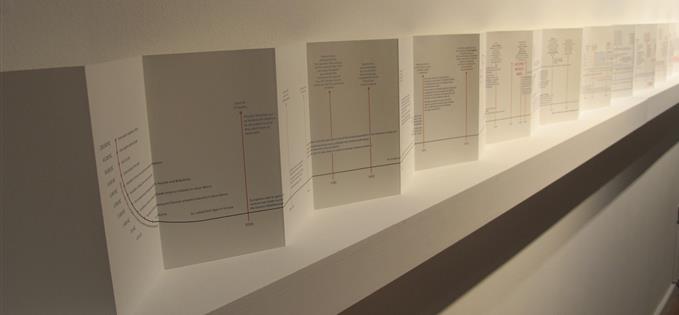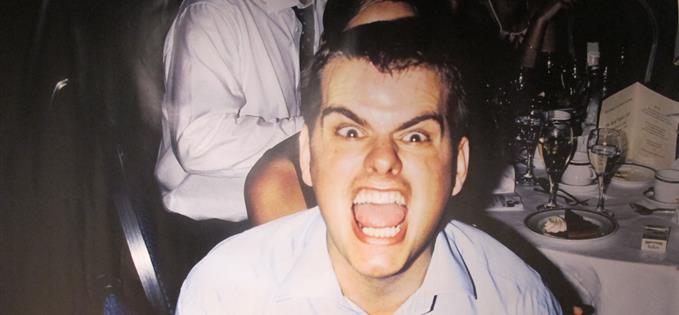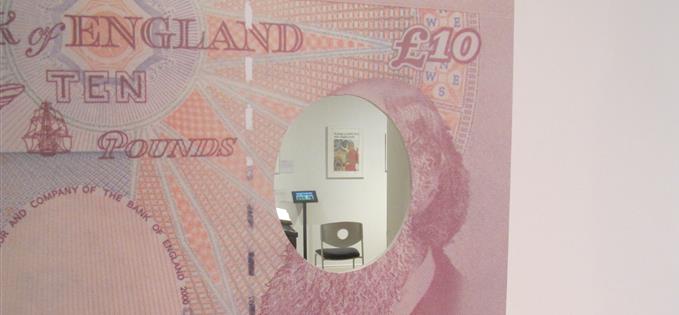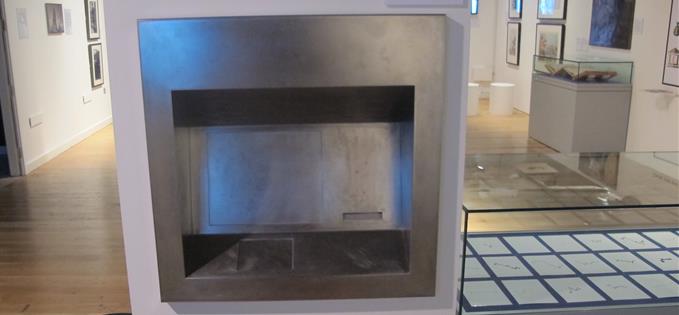MONEY and art make for strange bedfellows.
The starving artist in the garrett is meant to eschew worldly goods in pursuit of his or her muse, and yet the amount of cash sloshing around art fairs such as Basel and Miami is frankly astonishing. Can artists really critique the world of finance when at the first whiff of moolah they roll over and show their bellies to the capitalists of the world?
A cash point ejects one £5 note a day at random, to be taken by anyone in the near vicinity.
Instead of aggressive criticism, Show Me Money: Images of Finance at Manchester's People History Museum takes a more puzzled stance on the world of finance.
After all, money might seem hard-nosed and practical but it is a deeply ephemeral thing - is it pieces of paper or chunks of change of even ones and noughts flying through the ether?

Credit Crunch Lexicon (2012) by Simon Roberts
Great examples of this attempt to make sense of money include The Lost Horizon (2003) by Comford & Cross, the peaks and troughs of financial graphs transformed into fantastical mountain ranges, and How We Got to Where We Are (2012) by Jane Lawson, an elongated artist’s book that purports to tell the condensed history of the entire world economy. The real surprise is that it doesn’t wrap around the whole museum twice.
 How We Got to Where We Are (2012) by Jane Lawson
How We Got to Where We Are (2012) by Jane Lawson Similarly complex is William Powhida’s Griftopia (2012), which presents the connections between various key financial-world players as deeply suspicious (by the way, if you can afford to indulge your disdain of capitalism to the tune of $10,000, Griftopia is available to buy on artsy.com).

The urge to comment on the damage money can do is not new - in William Hogarth’s print series The Rake’s Progress (1734-5), the titular rake starts life as an impressionable young man from the country who comes to the city after inheriting money and swiftly embarks on a dissolute life. He doesn’t end well. In a similar vein, one wonders whatever became of the young man in Immo Klink’s arresting Bark (2004/2014) from the series the Real Fight Club.

Show Me the Money, People's History Museum
In theory, the PHM is the ideal place for the show, as money - in excess or in deprivation - affects us all. The exhibition mixes artworks with more documentary evidence which shows how our worries about money have developed from the personal and moral, to the innocence of 70s and 80s adverts which assure ladies that having a chequebook of their very own (gasp!) won’t render them unmarriageable to the social calamity we now find ourselves in. It’s just a shame that the exhibition didn’t have a little room to spread as the flood of visual information gets overwhelming at times.
 Cashpoint (2009-14) by Wolfgang Weileder
Cashpoint (2009-14) by Wolfgang Weileder The exhibit which will attract the most visitors and have them linger the longest is Cashpoint (2009-14) by Wolfgang Weileder, a work which takes the idea of public distribution of funds quite literally. A cash point ejects one £5 note a day at random, to be taken by anyone in the near vicinity. This simple premise based on complete chance arrives at the same end point as the swirling complex depictions of finance around it: round and round the money flows, into whose pocket nobody knows.
Show Me The Money: Images of Finance is at the People’s History Museum from 11 July-24 January 2016. There is an accompanying book available from Manchester University Press (£20).














